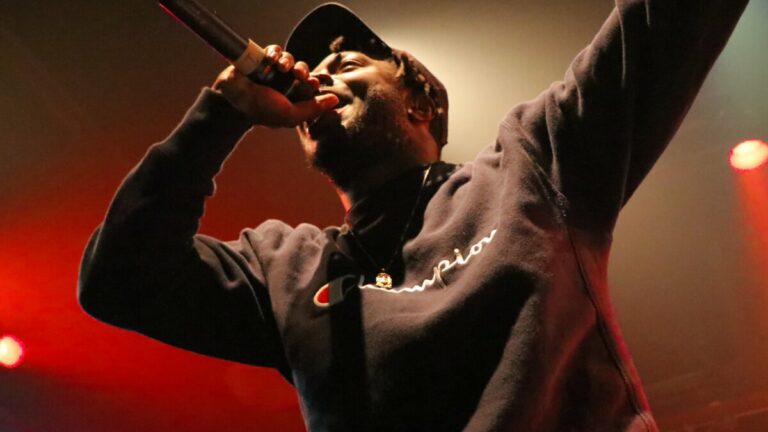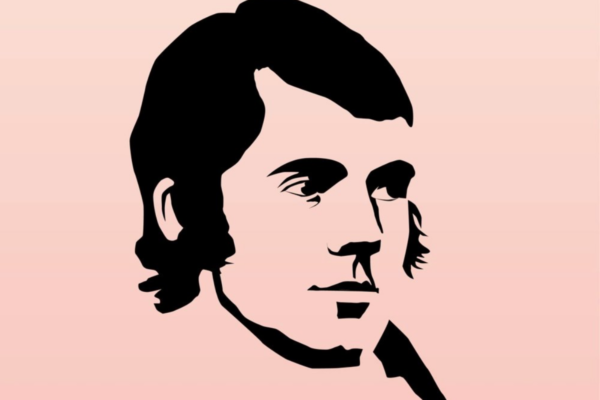Poetry and rap have a lot in common in terms of styles and tenets. The boundaries and parameters between rap and poetry are fluid and open. Because their functions and origins are so intertwined, it is difficult to totally separate the two when defining their relationship.
Some regard rap as a natural progression of African American oral traditions. Significant links can be seen between rap and talking blues and oral storytelling.
People evolve, and music changes with them but the two forms are more closely tied than most people realise. Rap is just a form of modern blues. If you listen to those old blues singers you’ll notice that the style isn’t too unlike some rappers. There isn’t much of a distinction between rap and talking blues.
From early slave songs to religious spirituals and folktales to James Brown and Jimi Hendrix’s there is a clear thread. When tracing the origins of rap and its predecessors, it’s clear that it goes back far further in time than the immediately previous forms. Further than just blues or spoken word in the twentieth century.
The age-old traditions of oral performance and storytelling in African culture have always been an important part of communication in African communities; from oral folktales to roaming griots.
Despite historical attempts to suppress indigenous African culture these forms of expression remain an inalienable component of African American culture. Afro-American culture is powerful, which is why it has survived. People can be removed from an area, but they take their culture with them. It influences their way of thinking.
In the twentieth century, spoken word poetry really rose in popularity in America. Jazz poetry became popular at the time of the Harlem Renaissance in the 1920s. Poets experimented with developing their work in line with jazz rhythms, using freestyle approaches.
Figures from the Beat Generation were drawn to free-form jazz poetry in the 1950s as an alternative to the mainstream. Their appetite for hedonistic methods and activities matched the spontaneity of live performance and production.
In the 1960s, artists like the Last Poets, and Amiri Baraka made popular spoken word poetry more explicitly political by speaking out in support of the civil rights struggle. The direct element of oral methods, along with the innate Black aesthetic, served to convey the urgent concerns of racial inequity.
In the 1970s saw the arrival on the scene of Gil Scott-Heron, a powerful poet and musician. His political poems like Whitey on the Moon and B-Movie are examples of how rhythm and melody can perfectly offset deep messages. Modern spoken word performers like Saul Williams or Ursula Rucker write poetry but also frequently work with contemporary musicians.
Historically, African American music and literature have worked in tandem. Both African American poets and musicians have recognized the connection between their arts.
In addition, both African American literature and music have speech-like rhythms. For example, when it comes to the blues’ use of rhythm and nuance, Afro-American speech is itself similar to the blues. It’s the way people speak and draw out meanings from words. Just by emphasising a word, you can give it multiple alternative interpretations.
We can identify modes of language performance in African American culture. These include sermons and prayers in the traditional Black Church; public speakers in political and social life; children’s games and skipping-rope rhymes: telling tall tales, including toasts and brags; and the lyrics of spirituals, jubilees, gospel songs and shouts. African American poetry contains all of these qualities in terms of form and theme.
Rap utilises a wide range of aural techniques and approaches. However, it is critical to identify rap’s unique quality that differentiates it from poetry. Many raps are written with no purpose of being lyrical and are instead written for entertainment value. Rap styles and lyrical matter might vary widely, but the trademark hip-hop flow and aesthetic is the uniting quality.
Rap is more than just a kind of spoken poetry. It also draws inspiration and borrows from previous spoken word works and genres.
It’s not quite correct to say that spoken word poets like Amiri Baraka and the Last Poets were the first rappers. However, the influence and similarities between poets who came before rap and rap pioneers are undeniable.
Whilst the history of poetry goes way back, rap can be traced back to the early ’70s with roots in funk and soul movements. Characters such as Kool Herc and Kurtis Blow are credited as being the first MCs. They would talk over the DJ in order to encourage people to dance and raise the intensity levels of the crowd.
The original goal of MCing was to engage the audience and establish a relationship, and the art of MCing evolved to do so while maintaining attention and energy.
MCs used to just work the audience and introduce people but someone like DJ Hollywood was the first rhythmic rapper who’d write long, rhythmic verses.
Artists like Kid Creole and Melle Mel were the first to actually flow and have a poetic vibe to their rhymes. They were real pioneers of rap.
As the hip-hop movement gained traction and grew, more artists became inspired. New rap styles began to emerge, pushing the form forward. As rap became more innovative, the parallels between rap and spoken word poetry became more evident. Rap’s success can be linked to a number of reasons, including increased influence and a desire to carve out one’s own distinct voice or niche. Hip-hop’s inherent competitiveness drove the focus on form and creative meaning. Rappers were able to experiment more, exploring the possibilities of rap as a medium. They took cues from spoken word poets before them, deepening the link between rap and spoken word.
For some rappers, the influence of spoken word poetry is obvious. Guru, for example, followed the tradition of boast rap by aligning himself with the highly influential and respectable figure Langston Hughes. Hughes was a key proponent of jazz poetry. He looked to educate his audience but also demonstrated the African practice of toasting and boasting.
In light of their unique histories and shared ancestry, there is clearly a connection between spoken word poetry and hip-hop. The impact and influence of the movement’s political spoken word poetry on the hip-hop generation is evident. The experimental and progressive nature of rap as an oral form relates so closely to spoken word poetry. Rap draws from spoken word, by highlighting Project Blowed of the Good Life Café. When the virtues and accomplishments of both rap and spoken word are compared, the merits and successes of both can be acknowledged as vital and of equal significance.
A Poetry walk can take numerous forms. Some locations call for majestic stanzas, while others favour limericks. You can walk for just a few minutes or for as long as a few weeks. The point is that walking while listening to poetry is very enjoyable. It could have something to do with the rhythm. It’s entirely possible that miles of walking may have influenced our language and tone.
Poetry became effective as a navigational tool as soon as we started travelling large distances and trying to recall routes. Walking lends itself well to learning lines and memorization, which children excel at and love. All of the routes below share a link between the poet and the landscape.



